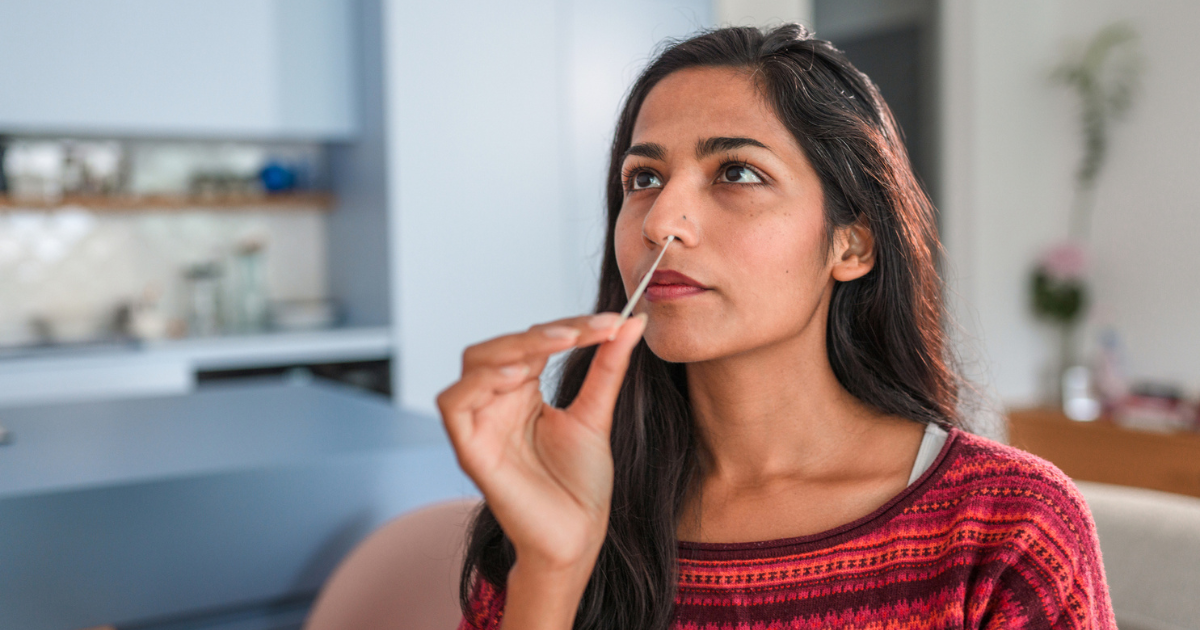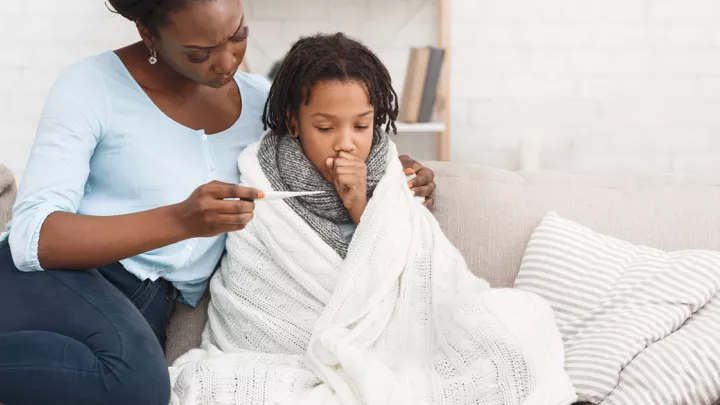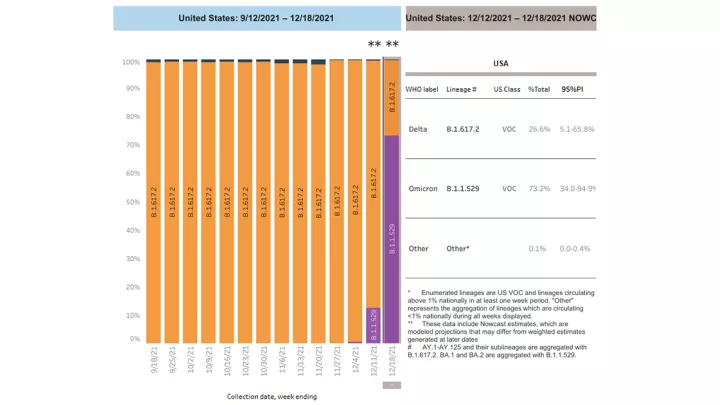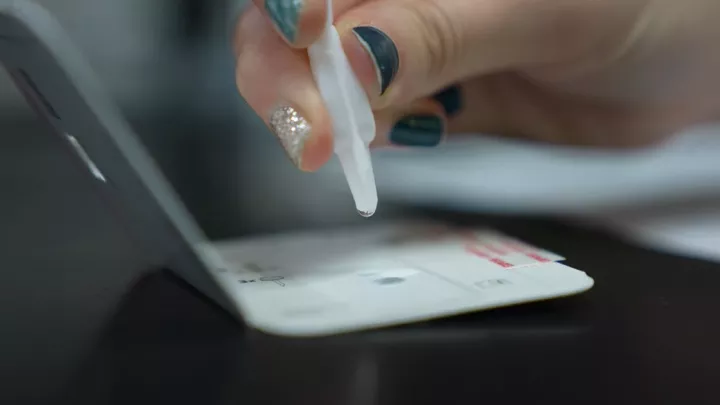New at-home test can detect both COVID and the flu

The development of at-home testing continues to evolve in accuracy and reliability. The U.S. Food and Drug Administration recently authorized the first molecular at-home test with the ability to detect both influenza and COVID-19 viruses.
The Lucira™ Check It COVID-19 Test is a single-use kit. Available over the counter (without a prescription), the test can detect and tell the difference between influenza A and B and SARS-CoV-2 (the virus that causes COVID-19). It detects all currently circulating COVID-19 variants, including omicron and all B.A. and B.Q. subvariants.
How does the Lucira™ Check It test work? How long does it take?
It is important to follow the instructions carefully for accurate results. All components needed for the test are contained in the package. Testing is based on a self-collected nasal swab of both nostrils. The swab is swirled in a vial inserted into the test unit. After about 30 minutes (or less), a display will show whether a person is positive or negative for each of the three viruses.
An adult should collect the sample for children ages 2 to 13. People 14 years or older may self-test.
Are Lucira™ Check It tests accurate?
The at-home tests are molecular, not rapid antigen, and provide PCR-quality accuracy. It is designed to detect if you have an active infection but does not confirm immunity or detect antibodies.
In people with symptoms, the test is very accurate:
- Detected 90% of influenza A cases
- Detected 88.3% of COVID-19 cases
- 99.9% of negative influenza B samples
- Tested negative in >99% of cases without infection
What to do about your results, positive or negative
All rapid diagnostic tests may have false positives and false negative results. Regardless, all results should be reported to your doctor so you can discuss additional medical care if needed.
If you test positive for influenza A, B, or COVID-19:
Take precautions to avoid spreading the virus. Call your doctor to discuss your results and inquire if treatment is appropriate or confirmatory testing is needed. Do not wait to call, as treatment is most effective when started early. Positive results do not rule out a bacterial infection or co-infection with other viruses.
If you test negative for COVID-19 and influenza:
If you test negative and continue to experience symptoms of fever, cough or shortness of breath, you may still have a respiratory infection or a false negative result. These may be caused by other viruses or bacterial infections. Call your doctor for follow-up care and guidance on further testing.
The at-home test is currently approved only under the FDA’s Emergency Use Authorization.







